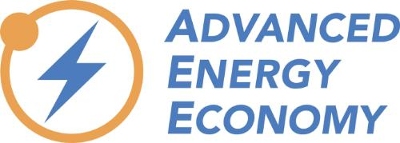Advanced Energy Economy Instituteis meeting with utility, advanced energy, and thought leaders in Illinois (and Chicago, specifically) to discuss the status and barriers of the industrial energy efficiency sector. Increased communication with industrial users was a common theme echoed by many throughout the discussion.
 The industrial sector is the largest user of energy, representing over 30 percent of total electricity usage in Illinois. Various technologies and services can make the use of energy in this industry more efficient. These include upgrades in motors, drives, and other equipment; industrial energy management systems, that analyze and manage energy consumption data within a production facility; demand response (DR) technologies that curtail energy use during periods of peak system demand; and combined heat and power (CHP), which produces both electricity and useful heat from the same fuel, either onsite or through CHP-powered district energy systems. An energy efficiency potential study prepared for Commonwealth Edison estimated that Illinois, by 2018, could easily achieve 5 percent cumulative achievable saving should cost caps remain in place. Without cost caps in place, Illinois would be able to 10 percent cumulative maximum potential if cost caps were lifted.
The industrial sector is the largest user of energy, representing over 30 percent of total electricity usage in Illinois. Various technologies and services can make the use of energy in this industry more efficient. These include upgrades in motors, drives, and other equipment; industrial energy management systems, that analyze and manage energy consumption data within a production facility; demand response (DR) technologies that curtail energy use during periods of peak system demand; and combined heat and power (CHP), which produces both electricity and useful heat from the same fuel, either onsite or through CHP-powered district energy systems. An energy efficiency potential study prepared for Commonwealth Edison estimated that Illinois, by 2018, could easily achieve 5 percent cumulative achievable saving should cost caps remain in place. Without cost caps in place, Illinois would be able to 10 percent cumulative maximum potential if cost caps were lifted.
“There is an important role that industrial efficiency can play in Illinois that provides savings to both businesses and consumers, while spurring economic growth and local and state level,” said Ray Fakhoury, State Policy Associate, AEE. “Energy efficiency and demand response have saved consumers millions on the cost of energy. We thank today’s participants for coming together to identify opportunities and outcomes that could reduce barriers and increase participation and investments in energy efficiency.”
RELATED: First non-California utility achieves 1 GW of solar energy capacity
AEE Institute brought together energy service business, end-users, city and government officials, and thought-leaders to discuss opportunities to capitalize on innovative technologies that save energy for industrial users and potential policy outcomes. The discussion highlighted projects completed by energy service companies in Illinois, which have helped industrial customers make their facilities more efficient and competitive. Additionally, participants learned about technologies available to the industrial sector to increase their competitiveness and reduce their energy costs. The group focused primarily on challenges surrounding the industrial efficiency sector, including: financing projects, consumer awareness, and improving access to data.
“Data access and energy intelligence software (EIS) are vital tools that helps end users control their energy use in real-time and to actively manage their energy costs,” said Greg Poulos, Director, Regulatory Affairs, EnerNOC. “The ability to identify savings opportunities and work directly with energy experts provides business leaders with an added value proposition to participating in energy efficiency.”
While Illinois continues to make significant progress on energy efficiency, more can be done to help all consumers. Illinois is presented with various opportunities for improving efficiency programs. An example of a policy measure that could be improved is the restructuring of the cost caps that dictate how much a utility is able to spend on energy efficiency programs. By improving the cost cap measure that is currently in place, utilities would be able to increase their investments in energy efficiency programs and achieve the efficiency goals, which the state is not currently reaching.
“Energy efficiency is a low-cost resource for meeting the state’s energy needs. It provides benefits to energy consumers and employs tens of thousands of Illinoisans in the manufacturing and installation of the products while saving Illinois’ largest companies thousands in energy costs. We hope that today’s conversation will open a dialogue between the region’s utilities, large energy consumers, government officials, and the companies that provide these valuable energy efficiency services,” concluded Tolbert.
— Solar Builder magazine

Leave a Reply
You must be logged in to post a comment.